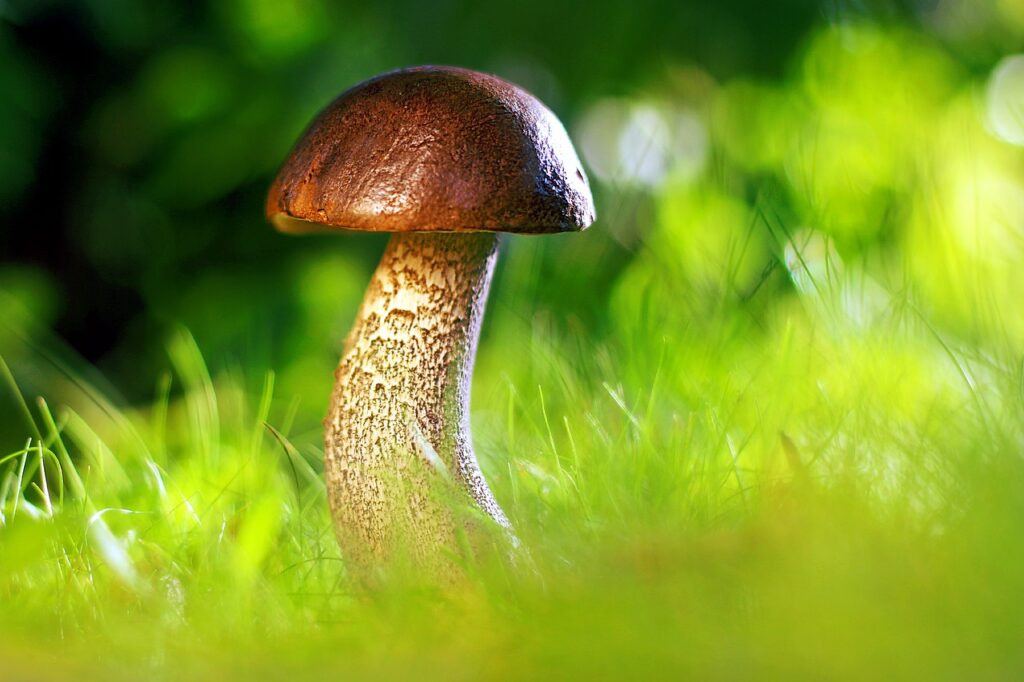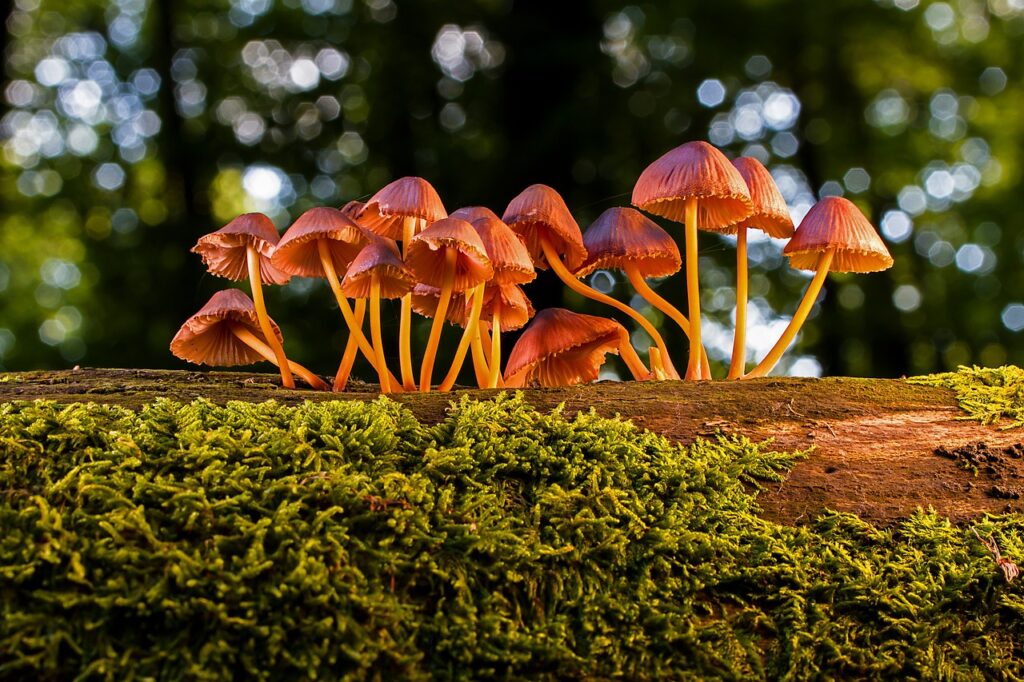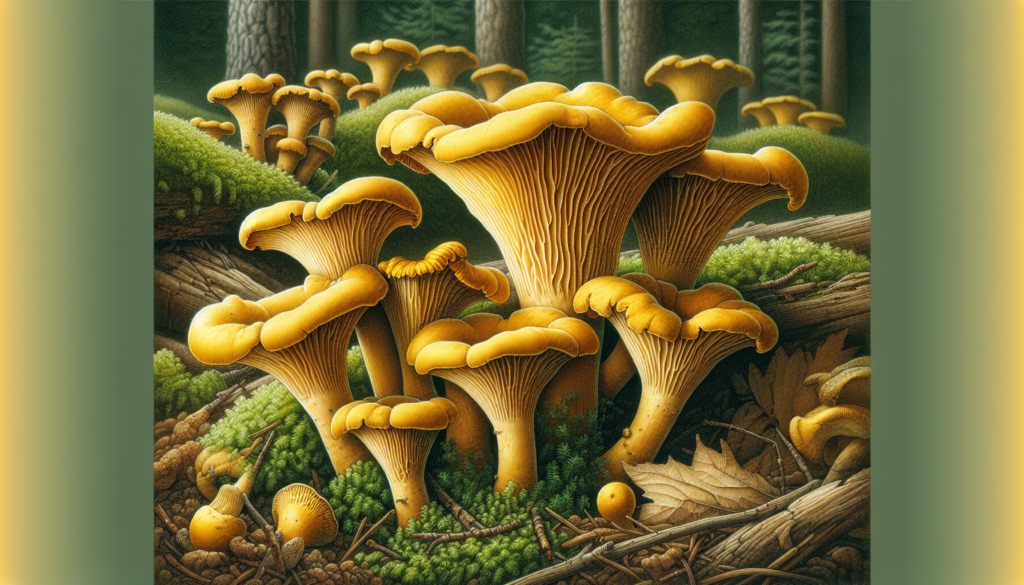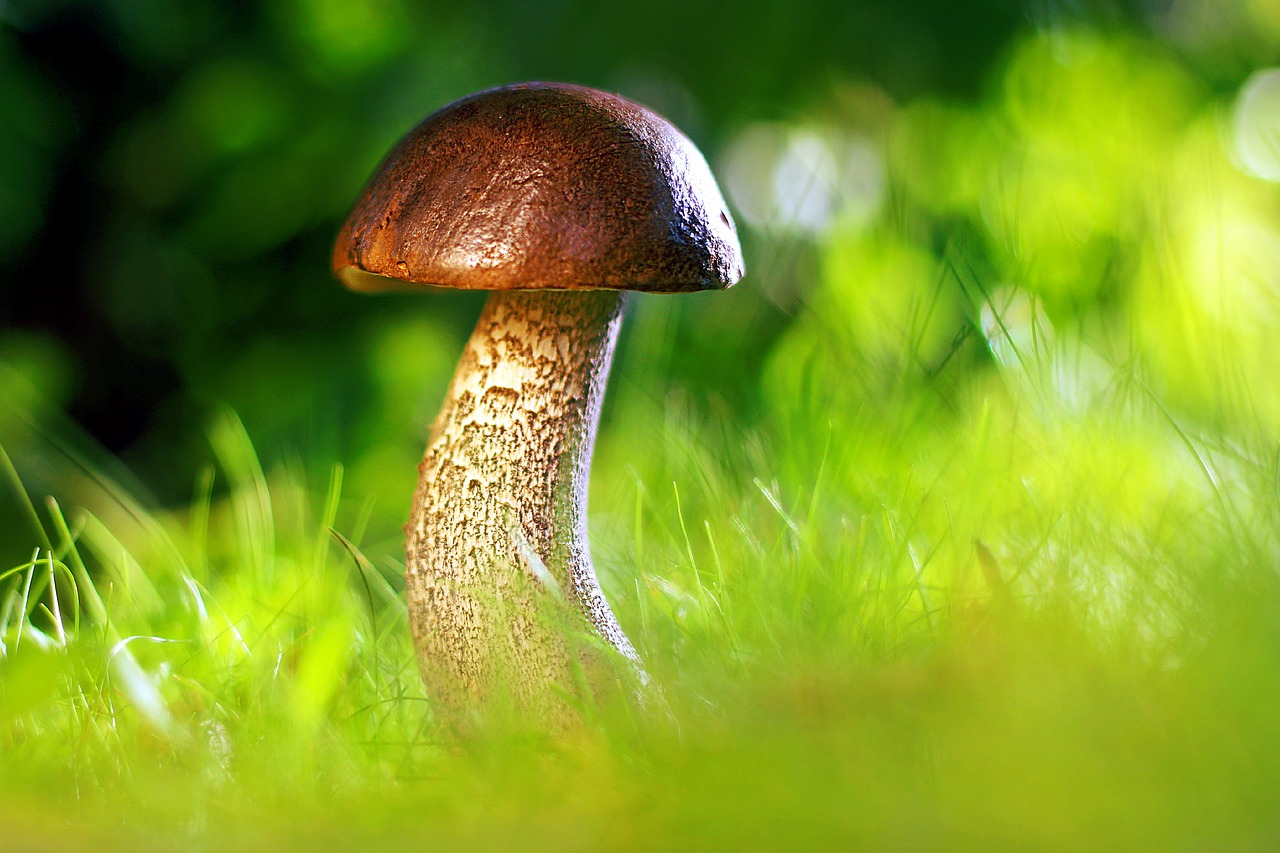Are you curious about whether identifying chanterelle mushrooms is a straightforward task? Well, you’re in for a treat! In this article, we will explore the fascinating world of chanterelle mushrooms and shed some light on the ease of identifying these delectable fungi. So, grab your metaphorical magnifying glass and get ready to embark on a journey of mushroom discovery!
Physical characteristics
Color
Chanterelle mushrooms are known for their vibrant color. Most commonly, they have a bright golden or yellow hue, similar to the color of a ripe apricot. However, they can also exhibit shades of orange, peach, and even white. The color of chanterelles is one of their most distinctive features, making them relatively easy to spot in the wild.
Shape
The shape of chanterelle mushrooms is another key characteristic that sets them apart. They have a funnel-shaped cap, which is often slightly convex and wavy at the edges. The cap can range in diameter from a few centimeters to several inches, and as it matures, it tends to flatten out. The underside of the cap displays a series of shallow, blunt ridges known as false gills, which will be discussed further later.
Size
Chanterelle mushrooms come in various sizes, ranging from small to quite large. On average, a mature chanterelle cap measures around 2 to 4 inches in diameter. However, sizes can differ depending on the species and the conditions in which they grow. It’s important to note that chanterelles tend to grow in clusters rather than individually, so when foraging, you may stumble upon several of these delightful mushrooms close together.
Texture
The texture of chanterelle mushrooms can be described as firm, yet delicate. Their flesh is smooth and supple, providing a pleasant bite when cooked. The cap has a velvety texture on top, while the underside reveals the aforementioned false gills, which are smoother and less defined than the true gills found in other mushroom species. This unique texture adds to the overall appeal of chanterelles when used in culinary creations.
Fragrance
One of the most enticing aspects of chanterelle mushrooms is their distinct fragrance. They emit a delightful scent often described as fruity, earthy, and slightly peppery. This aroma is often intensified when the mushrooms are cooked, filling the kitchen with an inviting scent that signals a delectable meal in the making. The fragrance of chanterelles can be a helpful clue when trying to identify them in the wild.
Habitat and season
Preferred habitat
Chanterelle mushrooms prefer specific habitats that provide favorable conditions for their growth. They are often found in forests, particularly those with a mix of deciduous and coniferous trees. The mushrooms have a symbiotic relationship with these trees, exchanging nutrients through their mycelium, which is the underground network of fungal threads. Chanterelles thrive in areas with moist, well-drained soil and moderate shade.
Geographical distribution
Chanterelle mushrooms have a wide geographical distribution, found in various parts of the world. They are especially prevalent in temperate regions of Europe, North America, and Asia. In Europe, they can be found in countries such as France, Germany, and Sweden. In North America, they are abundant in the Pacific Northwest and the Appalachian Mountains. Additionally, chanterelles can be discovered in parts of Asia, including China and Japan.
Seasonal availability
Chanterelle mushrooms have a distinct seasonal availability, typically appearing during specific times of the year. In many regions, they are most abundant in late summer to early fall, although the exact timing may vary depending on local climate and environmental conditions. It is during these months that chanterelles emerge from the forest floor, providing mushroom enthusiasts with the opportunity to enjoy their unique flavors and textures.

Distinctive features
False gills
One of the most notable features of chanterelle mushrooms is their false gills. Unlike the true gills found in many other mushroom species, the underside of a chanterelle cap displays shallow, irregular ridges that fork and branch out. These ridges are often described as looking like veins or veins of a leaf. These false gills are an important identifying characteristic and help differentiate chanterelles from other mushrooms.
Ridges
In addition to their false gills, chanterelle mushrooms have distinctive ridges on their caps. These ridges run from the center of the cap towards the outer edges, forming a characteristic pattern. The ridges are often irregular and wavy, adding to the overall aesthetic appeal of the mushrooms. When foraging for chanterelles, the presence of these ridges can be a helpful clue to confirm their identity.
Forked stems
Chanterelle mushrooms have stems that are typically short and stout, with a slightly bulbous or tapered base. One distinguishing feature of their stems is the presence of occasional forked or branching structures. These forks can be subtle or more prominent, resembling the branches of a tree. While not all chanterelles will exhibit forked stems, this characteristic, when observed, can further confirm their identification.
Spore color
The color of the spores, which are the reproductive cells of mushrooms, is another key feature in identifying chanterelles. When mature, the spores of chanterelles are typically a creamy white or pale yellow color. To determine the spore color, a method often used by mushroom enthusiasts is collecting a mature specimen and placing the cap on a sheet of paper overnight. The spores will drop onto the paper, revealing their color.
Veil remnants
When chanterelle mushrooms are in their early stages of growth, they may display remnants of a veil that once covered the developing cap. These veil remnants can appear as stretched-out white or yellowish patches on the cap’s surface. As the mushroom matures, the veil remnants often disappear or disintegrate. Observing these remnants can provide additional clues for identifying chanterelles.
Similar species
Jack-o’-lantern mushroom (Omphalotus olearius)
The jack-o’-lantern mushroom is often mistaken for a chanterelle due to its similar bright orange color. However, there are important differences to note. Unlike chanterelles, jack-o’-lantern mushrooms have true, well-spaced gills rather than false gills. Additionally, jack-o’-lantern mushrooms emit a bioluminescent glow in the dark, which is not a characteristic of chanterelles. It is crucial to distinguish between these species, as jack-o’-lantern mushrooms are toxic and should not be consumed.
False chanterelle (Hygrophoropsis aurantiaca)
Similarly to the jack-o’-lantern mushroom, the false chanterelle has a color resembling that of a chanterelle. However, false chanterelles lack the distinctive false gills and ridges found on true chanterelles. The false chanterelle also has a slimy texture, which sets it apart from the firm and smooth texture of chanterelles. While the false chanterelle is not toxic, its taste is generally considered inferior to that of true chanterelles.
Gyromitra species
Certain species of Gyromitra mushrooms, commonly referred to as false morels, can bear a resemblance to chanterelles, especially in their older age when they have a deeply wrinkled or brain-like cap. However, there are significant differences between the two. Gyromitras have a hollow stem, unlike the solid stems of chanterelles. Furthermore, Gyromitra mushrooms contain toxins that can be harmful when consumed, making proper identification crucial for safety.
Yellowfoot (Craterellus tubaeformis)
The yellowfoot mushroom, also known as winter chanterelle or trumpet of death, resembles a small, darker version of a chanterelle. However, its distinguishing feature is the absence of false gills. Instead, yellowfoot mushrooms possess a smooth, beige or cream-colored cap and a hollow stem. While they share some similarities in appearance, the absence of false gills makes it easier to differentiate yellowfoot mushrooms from true chanterelles.

Edibility
Safe to eat
One of the many reasons why chanterelle mushrooms are highly sought after by foragers and chefs is their delectable flavor and edibility. True chanterelles are generally safe to eat, with no known poisonous species that closely resemble them. However, it is essential to ensure proper identification to avoid confusion with toxic mushrooms.
Confusion with toxic mushrooms
While chanterelles are considered safe to eat, it is crucial to be aware of the potential for misidentification and confusion with toxic mushrooms. As mentioned earlier, mushrooms such as the jack-o’-lantern mushroom and certain Gyromitra species can resemble chanterelles but are toxic and should not be consumed. Therefore, it is vital to consult reliable sources and experts, or to err on the side of caution if there is any uncertainty about the identification.
Popular culinary uses
Sautéing
One of the most common and beloved methods of cooking chanterelle mushrooms is sautéing. Their delicate texture and unique flavor profile make them a perfect candidate for quick and simple cooking techniques. Sautéed chanterelles can be enjoyed as a topping for steak, mixed into pasta dishes, or served as a side dish alongside other vegetables.
Soups and sauces
Chanterelle mushrooms add a delightful depth of flavor to soups and sauces. Their fragrance and earthy taste complement a variety of traditional soup recipes such as cream of mushroom or wild mushroom soup. Additionally, finely chopped chanterelles can be incorporated into various sauces, including cream-based, wine-based, or even as a sauce for poultry or fish.
Stuffed mushrooms
The firm texture of chanterelles makes them an ideal choice for stuffing. Whether it’s with a mix of cheese, breadcrumbs, herbs, or other flavorful ingredients, stuffed chanterelles are a delightful appetizer or side dish option. The distinctive shape and vibrant color of the mushrooms make them an eye-catching addition to any table.
Casseroles and pasta dishes
Chanterelle mushrooms can elevate the flavors of casseroles and pasta dishes. Whether in a creamy gratin, a hearty baked pasta dish, or a light pasta primavera, their unique taste and texture bring a delightful element to these comfort foods. The golden color of the mushrooms also adds an aesthetic appeal to the final dish.
Preserving
To prolong the enjoyment of chanterelle mushrooms beyond their limited seasonal availability, many enthusiasts turn to preserving methods. Chanterelles can be dried or frozen for later use, allowing mushroom lovers to savor their unique flavors throughout the year. Dried chanterelles can be rehydrated and used in various dishes, while frozen chanterelles can be easily added to soups, stir-fries, or sauces.

Identifying chanterelles
Field guidebooks
Field guidebooks dedicated to mushrooms are valuable resources for identifying chanterelles and other species. These books typically provide detailed descriptions, color photographs, and helpful tips for distinguishing between similar mushrooms. They are especially useful when foraging in the wild, as they can be readily accessed and carried for reference.
Online resources
In the digital age, numerous online resources are available for mushroom identification. Websites, forums, and social media groups dedicated to mushrooms offer extensive information and provide opportunities for interaction with experienced mushroom enthusiasts. Online resources can be particularly helpful for comparing visuals, discussing specific characteristics, and seeking identification assistance.
Joining mushroom clubs or forays
Joining local mushroom clubs or participating in mushroom forays is an excellent way to expand knowledge and skills in mushroom identification. Mushroom clubs often organize group excursions guided by experienced experts who can provide hands-on instruction. These outings also offer valuable opportunities to learn from fellow members, share insights, and discover new habitats where chanterelles may thrive.
Seeking expert guidance
When in doubt or lacking confidence in identifying chanterelle mushrooms, it is advisable to seek expert guidance. Professional mycologists or knowledgeable individuals within the scientific community can provide accurate assessments and answer queries related to mushroom identification. Their expertise and trained eye can provide additional assurance when dealing with potentially toxic look-alike species.
Examining key features
To accurately identify chanterelle mushrooms, it is important to examine their key features. Take note of their distinct color, false gills, ridges, and any other distinguishing characteristics mentioned earlier in this article. By carefully observing and comparing these features to reliable references, you can confidently differentiate chanterelles from other mushroom species.
Variety of chanterelles
Golden chanterelle (Cantharellus cibarius)
The golden chanterelle, also known as Cantharellus cibarius, is the most widely recognized and commonly encountered species of chanterelle. It has a bright golden or yellow color, false gills, and a distinctive fragrance. This variety is highly sought after for its delicious flavor and versatile culinary uses.
White chanterelle (Cantharellus subalbidus)
The white chanterelle, or Cantharellus subalbidus, is a unique variety of chanterelle known for its pale white or cream-colored caps. This species exhibits similar characteristics to the golden chanterelle, including false gills and a pleasant aroma. Although less common, the white chanterelle is valued by mushroom enthusiasts for its subtle flavors and unusual appearance.
Black trumpet (Craterellus fallax)
The black trumpet, scientifically known as Craterellus fallax, is a distinct type of chanterelle that differs from the traditional golden or white varieties. It is characterized by its trumpet-shaped cap, which is typically black or dark brown in color. Black trumpets have a rich, smoky flavor that pairs well with various dishes, making them a popular choice among mushroom aficionados.
Cinnamon chanterelle (Cantharellus cinnabarinus)
The cinnamon chanterelle, or Cantharellus cinnabarinus, is another fascinating variety of chanterelle. As its name suggests, it exhibits a beautiful cinnamon or reddish-brown color. This species shares many similarities with the golden chanterelle in terms of shape, texture, and fragrance. Cinnamon chanterelles add a delightful visual and flavor element to culinary creations.

Caution and ethical considerations
Forage responsibly
When engaging in mushroom foraging, it is crucial to do so responsibly. Respect the natural environment and only pick mushrooms that you can positively identify as safe and edible. Avoid over-harvesting by taking only what is needed and leaving behind enough mushrooms for others to enjoy. Remember that chanterelles play an essential role in forest ecosystems, so it is important to forage sustainably.
Don’t consume unidentified mushrooms
Never consume mushrooms that you cannot confidently identify. Even a slight uncertainty can pose significant risks to your health. When in doubt, seek the guidance of experts or consult field guides and online resources for assistance. It is better to err on the side of caution than to risk consuming a toxic mushroom.
Protecting delicate ecosystems
Chanterelle mushrooms, like all fungi, are part of delicate and intricate ecosystems. They contribute to the decomposition of organic matter, recycling nutrients, and providing food sources for various organisms. When foraging for chanterelles, be mindful of the environment and avoid damaging the forest floor or disturbing the habitats of other organisms. By respecting nature, we can ensure the long-term well-being of chanterelle populations and their habitats.
Conclusion
Chanterelle mushrooms are truly a delight to discover and enjoy. Their vibrant colors, distinctive features, and unique flavors make them highly sought after in the culinary world. While proper identification is essential to ensure safety, learning to recognize the physical characteristics, understanding their habitat and seasonality, and exploring their culinary uses can greatly enhance the experience of encountering these marvelous mushrooms. So, the next time you venture into the forest, keep your eyes peeled for the golden treasures that are chanterelles, and embark on a culinary journey that will undoubtedly satisfy your taste buds.



No Responses